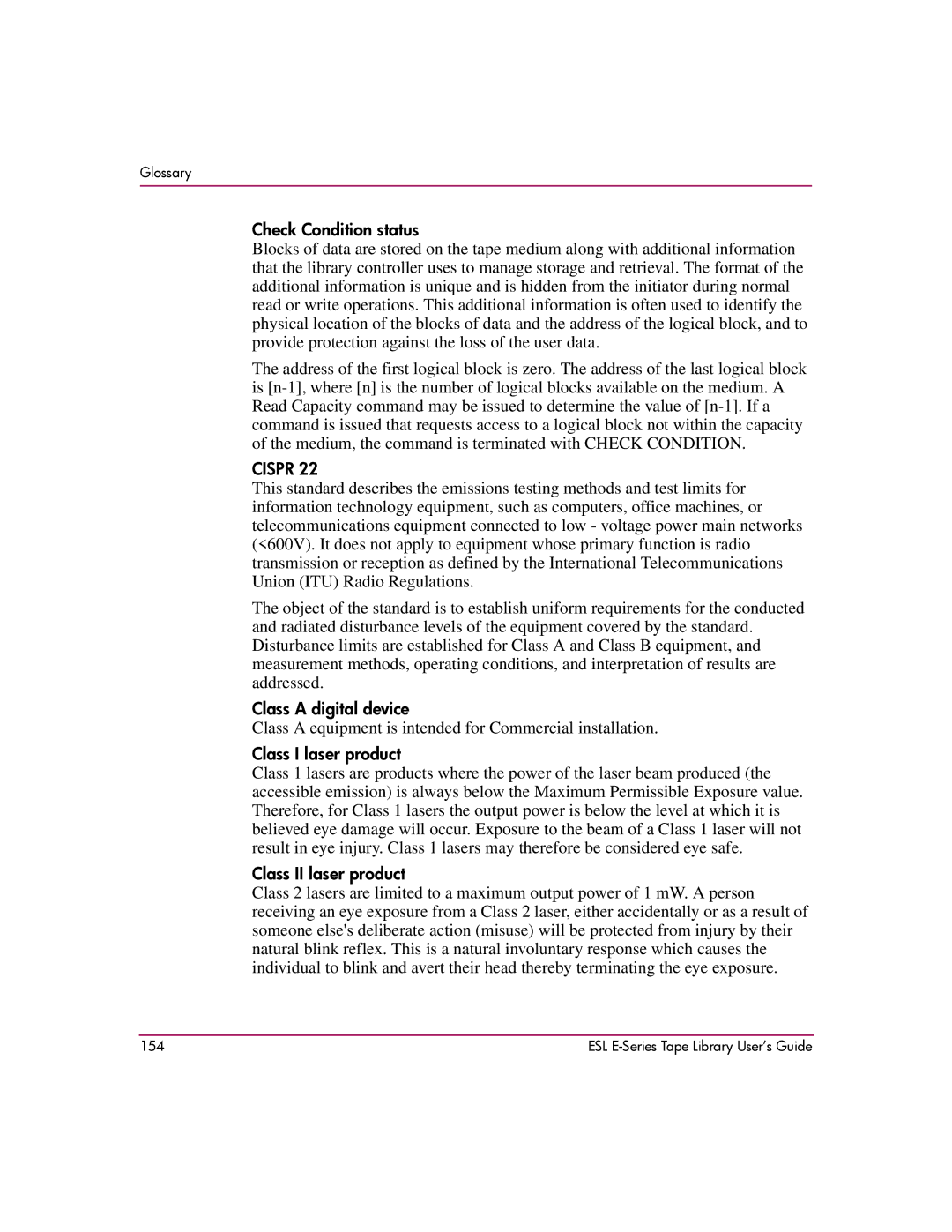Glossary
Check Condition status
Blocks of data are stored on the tape medium along with additional information that the library controller uses to manage storage and retrieval. The format of the additional information is unique and is hidden from the initiator during normal read or write operations. This additional information is often used to identify the physical location of the blocks of data and the address of the logical block, and to provide protection against the loss of the user data.
The address of the first logical block is zero. The address of the last logical block is
CISPR 22
This standard describes the emissions testing methods and test limits for information technology equipment, such as computers, office machines, or telecommunications equipment connected to low - voltage power main networks (<600V). It does not apply to equipment whose primary function is radio transmission or reception as defined by the International Telecommunications Union (ITU) Radio Regulations.
The object of the standard is to establish uniform requirements for the conducted and radiated disturbance levels of the equipment covered by the standard. Disturbance limits are established for Class A and Class B equipment, and measurement methods, operating conditions, and interpretation of results are addressed.
Class A digital device
Class A equipment is intended for Commercial installation.
Class I laser product
Class 1 lasers are products where the power of the laser beam produced (the accessible emission) is always below the Maximum Permissible Exposure value. Therefore, for Class 1 lasers the output power is below the level at which it is believed eye damage will occur. Exposure to the beam of a Class 1 laser will not result in eye injury. Class 1 lasers may therefore be considered eye safe.
Class II laser product
Class 2 lasers are limited to a maximum output power of 1 mW. A person receiving an eye exposure from a Class 2 laser, either accidentally or as a result of someone else's deliberate action (misuse) will be protected from injury by their natural blink reflex. This is a natural involuntary response which causes the individual to blink and avert their head thereby terminating the eye exposure.
154 | ESL |
